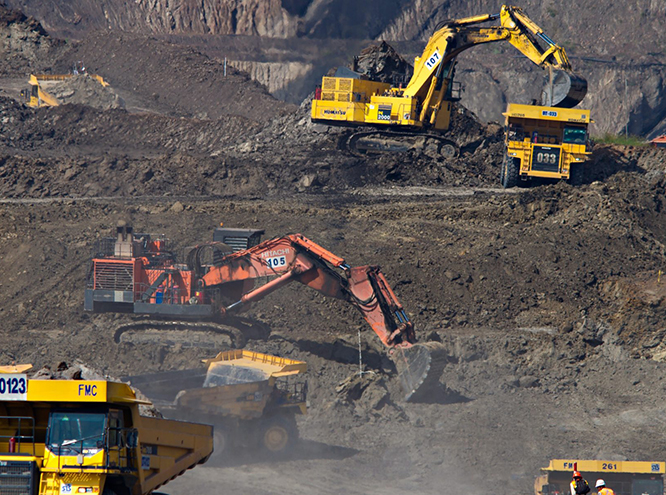It’s possible that the phrase “unprecedented times” has been uttered more in the past year than ever before. So much so that the Oxford English Dictionary expanded their practice of announcing one word of the year to announcing ten words of the year in 2020—just to keep up with all the events of the past twelve months.
2020 was undoubtedly a challenging year, and moving forward, many organizations will be looking for ways to streamline and refine their business processes, eliminate operational redundancies and bottlenecks, and build a business model that can withstand any economic storm.
Enter process mining as the solution to this issue.
What is process mining? As Ui Path so aptly puts it,
“Process mining is a technique to analyze and monitor processes. In traditional business process management, it is done with process workshops and interviews, which results in an idealized picture of the process. Process mining, however, uses existing data available in corporate information systems and automatically displays the real process.”
What should you know about process mining and what it can do for your organization? We’re breaking it all down here.
The Challenges of Older Process Management Practices
The way that many business process management reviews are performed today can be quite problematic. This is because organizations have little interest in exploring how their processes are currently performed before focusing on how to make improvements.
The issue? It’s crucial to understand where performance problems exist in the here-and-now before finding ways to make things better. Some companies take shortcuts here, and others pay a lot of money to an outside source—one that doesn’t have their finger on the pulse of current company culture or actual daily operations to truthfully analyze the process.
On the other hand, some companies spend far too much time analyzing how things are in-the-moment. They conduct lengthy, time-consuming interviews, most of which aren’t that productive anyway, as many employees approach them with “justifiable skepticism.”
The biggest divide in older business process management practices though is the lack of connection between business processes and an organization’s enterprise information system. To gather information about how processes perform from day to day with this model, there’s a complicated set of procedures to gather data and understand it. Some “brand name,” established improvement approaches don’t pay due attention to information technologies and how they enable process management.
Oftentimes with these older process management strategies, it all just becomes a complicated, convoluted mess.
How Process Mining Works
Perhaps Gartner’s “2020 Gartner Market Guide for Process Mining” stated it best: “Process mining helps enterprise architecture and technology innovation leaders understand operations and performance in order to create operational resilience.”
Whenever we interact with corporate IT systems, our activities are all recorded by these systems. Process mining takes all of this data and puts it into an event log, creating visualizations of your entire end-to-end process, providing insightful analysis along the way.
This gives you real, palpable data to understand and improve the way things get done, no matter your process or industry.
Are you curious about the mining process? Here’s how it happens:
- Accessing your digital footprint: Using event data in your enterprise system like timestamps, case IDs, and activities, process mining software reads this data and places it all in an event log.
- Analyzing each step in the process: Through this event log, process mining will create a graph to understand every detail of your process like the timing and any variations in how your team works. It will highlight a “happy path,” or ideal processes and reveal any deviations like bottlenecks and workflow inefficiencies.
- Make adjustments to your workflow: Because the process mining application gives you a complete visualization of your operations, you can zero in on the things that need to be adjusted to optimize your workflow—and exactly how to make it happen, too, as well as the return on your efforts. This will give you the power to choose and prioritize the adjustments that will have the most impact and make the most sense for your unique organization.
- Monitor ongoing performance: Follow along with your performance to see if you’re getting the results you expected.
There’s a Better Way: Why Process Mining Works
There’s a reason process mining is an incredibly popular option for organizations of all sizes: It works. Here’s how it can impact your organization:
- Survey operations processes across your entire enterprise and analyze them accurately with data-based information
- Pinpoint inefficient processes that can be reimagined or automated with a robotic process automation tool
- Get continuous monitoring of processes and monitor your organization’s improvement
- Simplify compliance and enjoy full audit trails
- Analyze any process in any functional area like contact centers, purchase-to-pay, order-to-cash, and more
In any industry—financial services, telecommunications, manufacturing, healthcare, consumer goods, and more—process mining can help you discover key ways to make significant operations improvements.
Process Mining and Robotic Process Automation: A Winning Combination
According to the 2020 Process Mining Sector Scan, 78 percent of those who enable their businesses to do more through robotic process automation (RPA) say that process mining is the golden ticket to maximizing their RPA efforts. What is the secret reason that process mining is so helpful to these automation practices?
- It provides context and perspective to improve and automate processes where RPA can make the most impact
- It allows organizations to improve processes before automating them
- It highlights the areas that are most beneficial to automate
- It delivers continuous monitoring of performance and return-on-investment (ROI)
- It gives organizations the ability to build RPA that’s fact- and data-based
When you’re looking to combine the power of process mining and RPA to create an unstoppable, streamlined operation, Cronos can make it happen. Learn more about how our RPA and process mining services can make your organization a force to be reckoned with—contact us today!


